Engage students in continuous reading practice and master reading standards
What Type of Reading Practice Do Students Need?
Real-Time Feedback Loop
Students receive real-time, information-rich feedback when it matters, so they can learn and immediately apply new knowledge.
- deliver timely, specific feedback that they use in the moment to help them improve.
- enhance instruction with feedback that is personalized and targeted based on students' learning needs.
- celebrate achievement, identify learning opportunities, and sets goals for each student.
- ignite thinking with opportunities for students to understand their mistakes, learn what happened, and improve going forward.
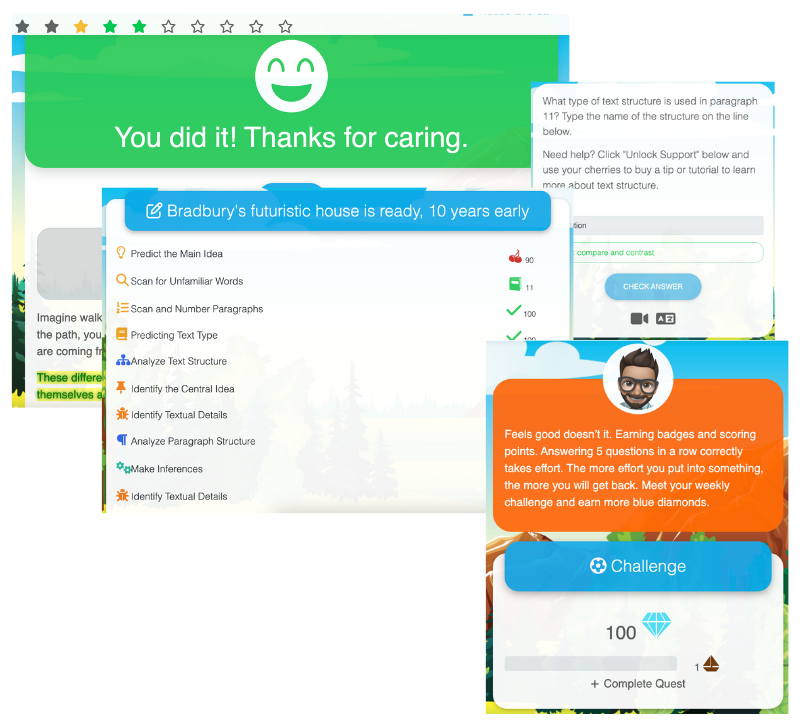
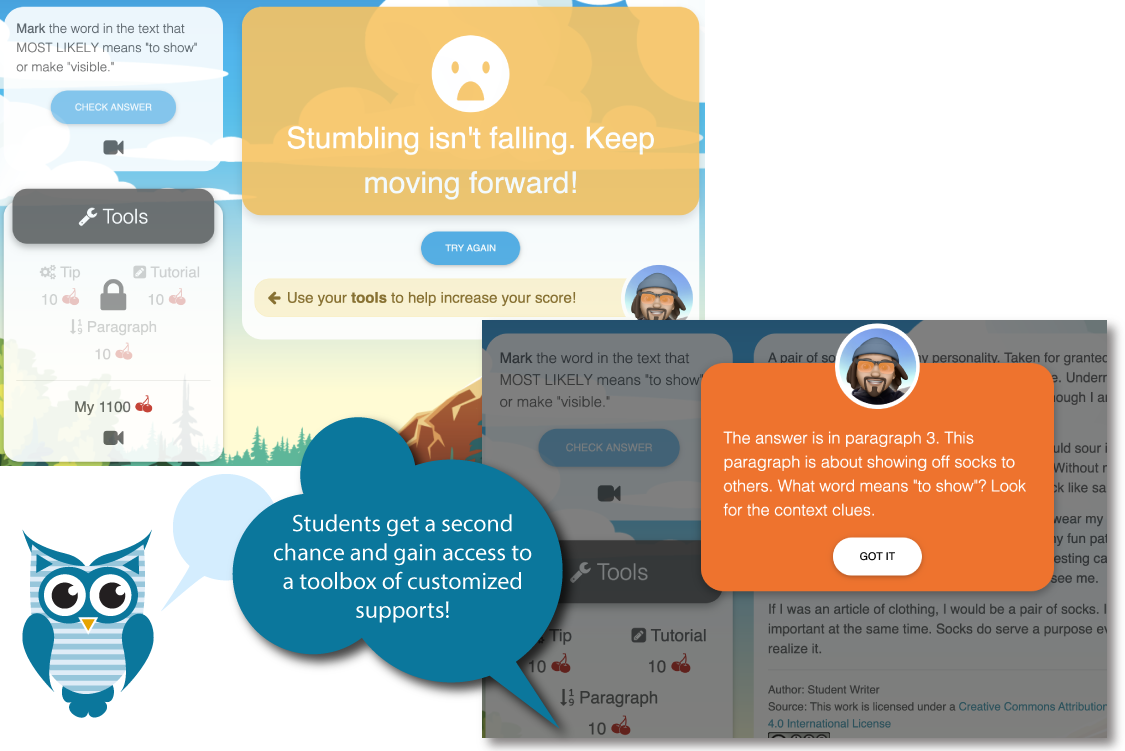
Strategic Scaffolds
The best kind of scaffolds are those that increase access to challenging material and help students meet our high expectations.
- accelerate academic language with our Language dictionary that defines and contextualizes words, phrases, people, places, and things, helping students understand what words and phrases mean and why they were used in context.
- automatically chunk texts for students when they need to focus on a specific section of text.
- differentiate support with video tutorials, tips, word banks, text-to-speech, and infographics to help students meet reading standards.
- give students choice in selecting their scaffolds which increases motivation as they make decisions about the support they need in the moment.
- engage students in collaborative activities that use speaking and writing to support the reading of complex texts.
- Learn more about how we support multilingual learners.
Adaptive, Differentiated Learning
Our online reading practice delivers reading lessons that adapt to students current reading levels and use positive feedback, goal setting, and gamification best practices to motivate them to move up. The personalized learning pathways provide support at the appropriate level, supporting the teacher and instilling confidence in the students.
- personalize learning for every student in class.
- meet students where they so they feel comfortable and confident as they learn and grow.
- differentiate lessons and goals so students are working toward improving the reading skills and standards they need to learn.
- build critical content knowledge and vocabulary with our language dictionary that explains what words and phrases mean as they are used in context.
- deliver student-friendly feedback appropriate for the diverse learning needs in a classroom.
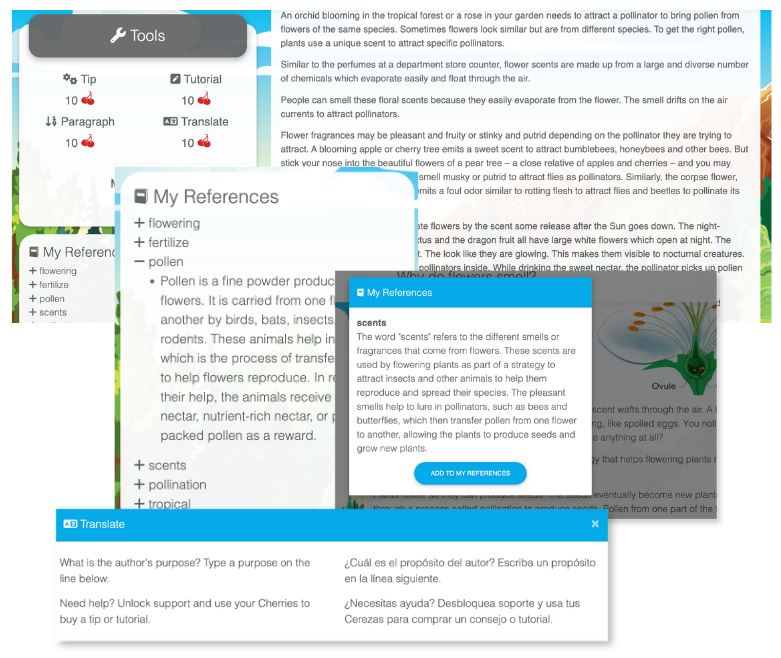
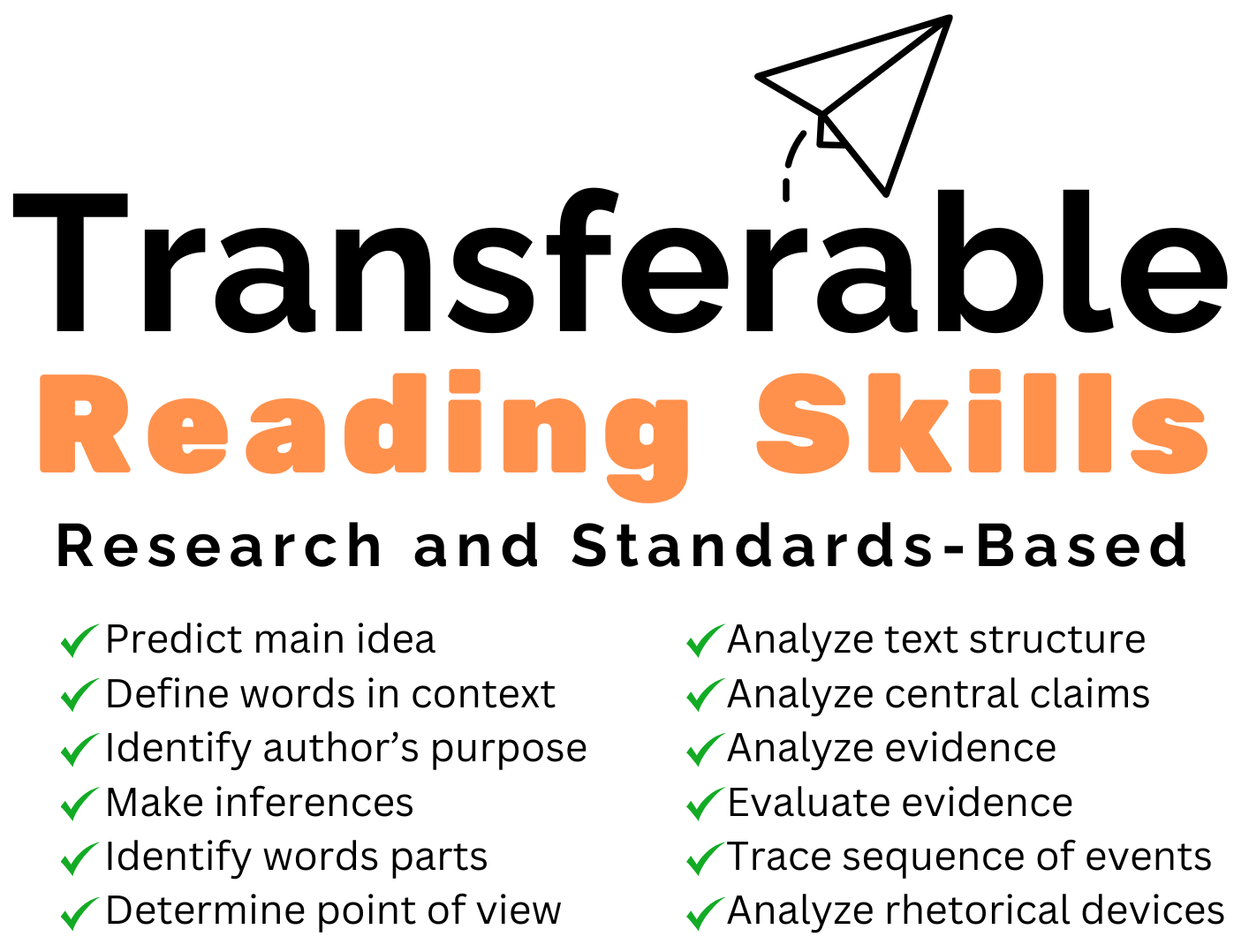
Transferable Skills
Our skill-based pedagogy which is the foundation of our online and in-class reading practice explicitly teaches essential skills all students need to read well in school and in life.
- achieve school-wide literacy practices.
- vertically align reading skills to ensure students are building skills at each grade level.
- strengthen text analysis and critical thinking skills essential for text-dependent writing tasks.
- rehearse and master a research-based reading process that can be used school-wide.
- master essential deep reading skills and standards like identifying the main idea, accounting for claims and evidence, and analyzing text structure.
Reading Practice Effectiveness
3 Quests
Students engage in 3 online reading practices per week
Reflection
Teacher reviews data with students biweekly
~2 Growth
Average reading grade level growth per year
Effortlessly Onboard Students
Student sign-up takes less than 2 minutes. Students can sign in with their Google accounts or create an account with unique user names and passwords. Teachers can easily invite students to a class with a Class Code. Teachers can manually release reading practice or set the class to autopilot and allow Quests to release automatically.

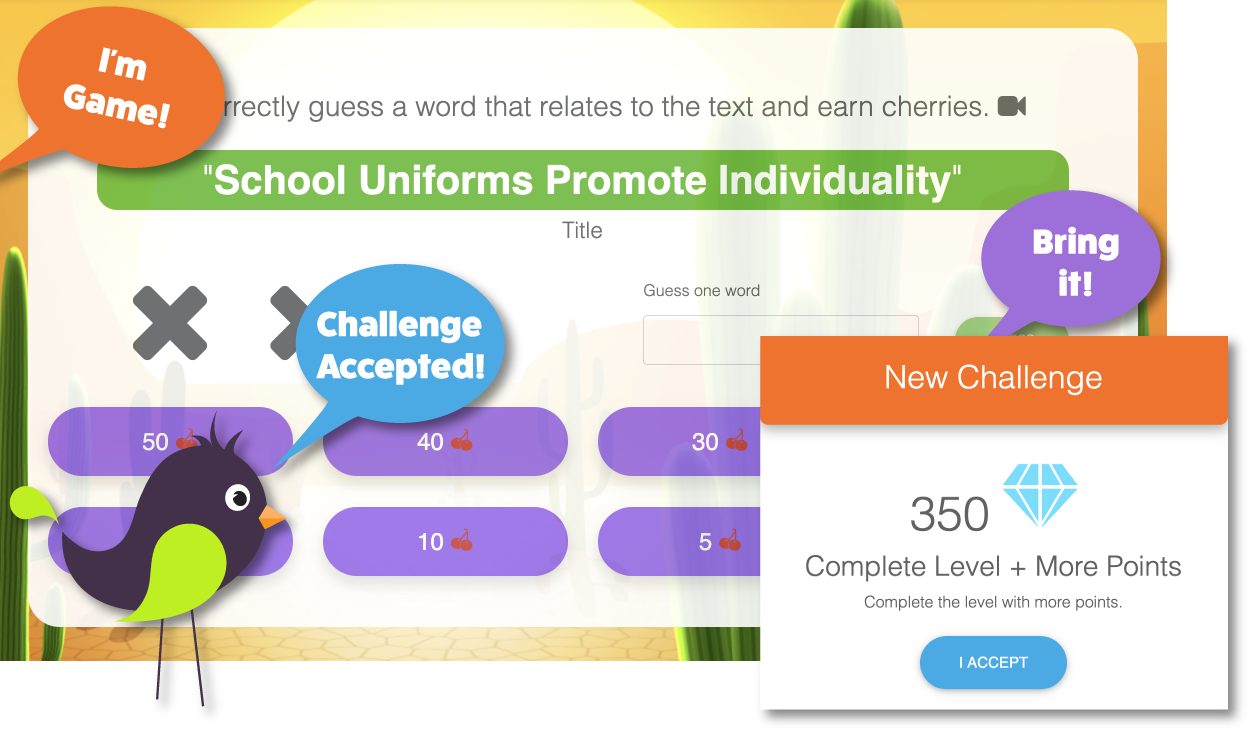
Go On A Quest
Our reading practice and lessons are called Quests. While reading online, students participate in Quests that adapt to students' reading needs. A Quest issues high-interest texts to students 1-3 times a week depending on how many Quests teachers want students reading each week. Each Quest poses 10 close reading questions about one text, teaching students to reread for multiple purposes. A Quest takes approximately 12-20 minutes without writing. If text-dependent tasks are turned on, the Quest can take up to 45 minutes.
Continuous Feedback
While students read online, they will receive real-time feedback about how they are doing. Students have second chance opportunities to learn and try to answer a question a second time. At the end of a Quest, students receive personalized feedback from their customized coach, and video tutorials are provided for each question that is missed in order to build foundational knowledge of the standard.

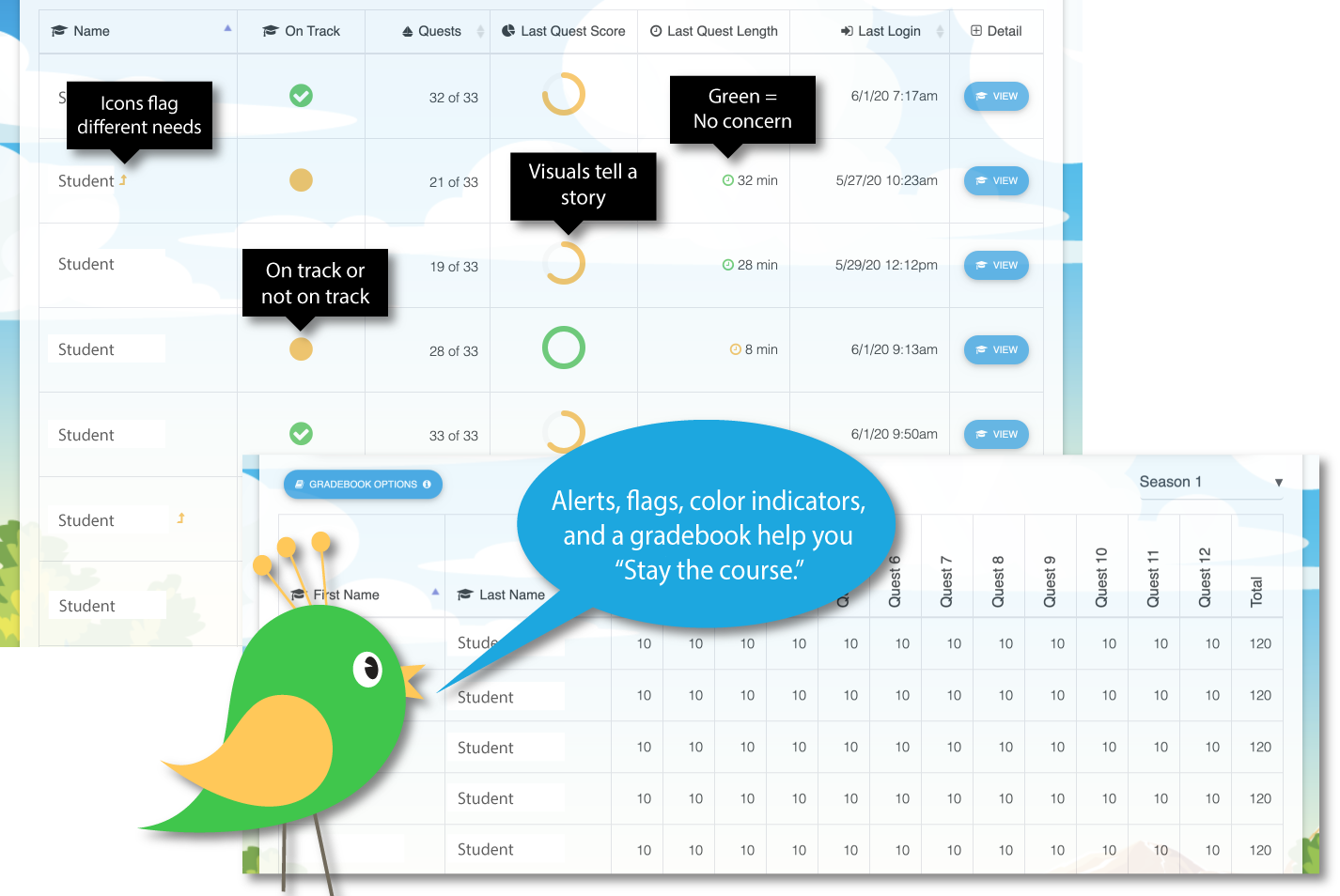
Activity Dashboards
Teachers always know what is happening with our Activity Dashboards. Teachers can click on a class and view current activity and Quest history. We use two colors (green and yellow) to easily communicate to teachers if a student is engaging with the reading lesson as expected. Times and scores in green indicate that students are meeting expectations. Yellow colors tell the teacher that students are not on task, not trying, or scoring below expectations. These real-time alerts make it easy for teachers to respond quickly to students' needs.
Add quality reading practice all year!
47 Minutes
each week which equals 1,692 additional minutes per year
30 Questions
each week which equals 1,080 additional questions per year
2450 Words
each week which equals 88,200 additional words per year